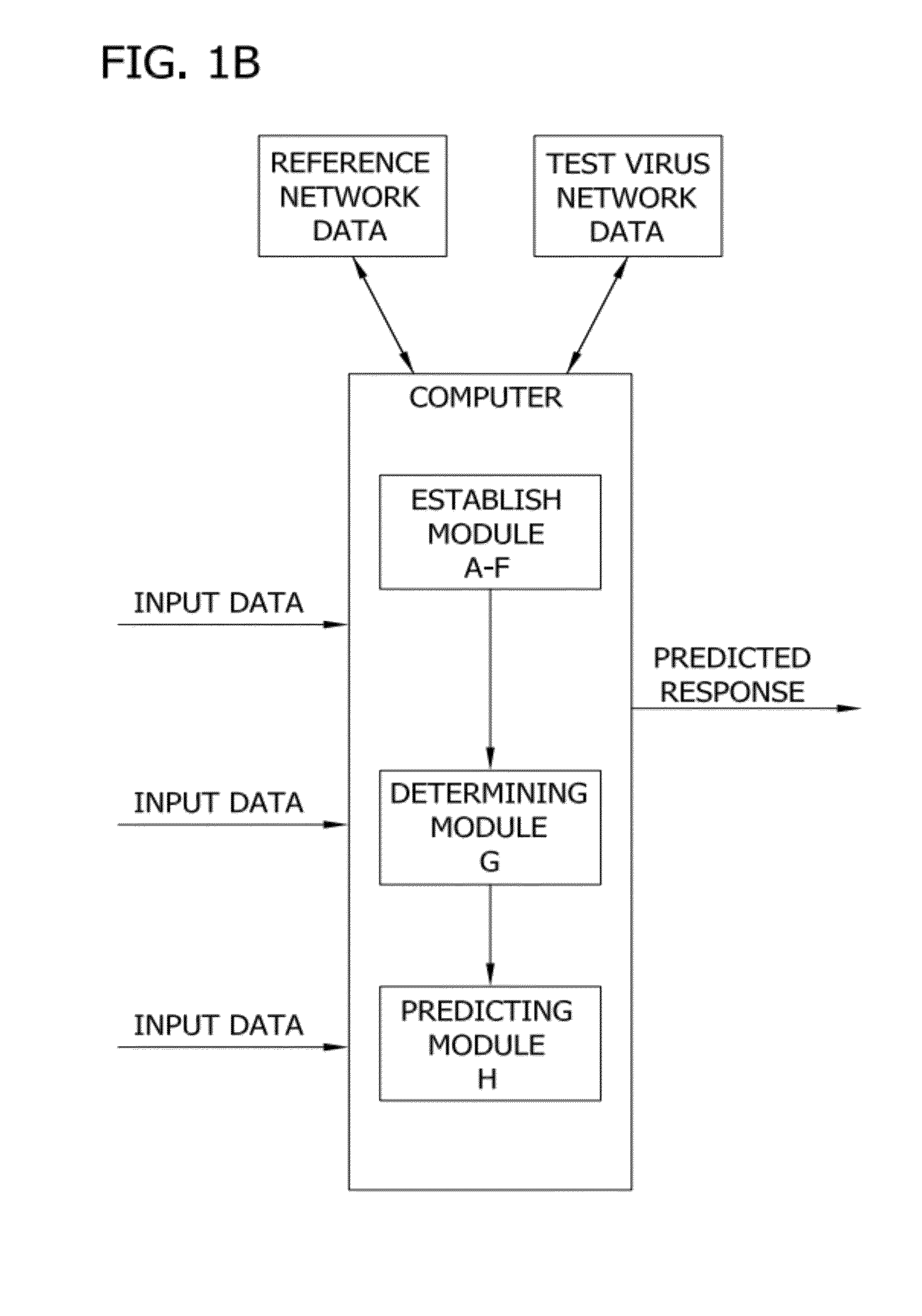Network threading approach for predicting a patient's response to hepatitis c virus therapy
a technology of predicting the response of a patient to a virus and a network threading, which is applied in the field of computer-implemented methods for predicting the response of a virus to antiviral therapy, can solve the problems of patients' loss from the viral population, limited efficacy of hbv therapy, and no effective treatment for patients
- Summary
- Abstract
- Description
- Claims
- Application Information
AI Technical Summary
Benefits of technology
Problems solved by technology
Method used
Image
Examples
examples
[0105]The following non-limiting examples are provided to further illustrate the present invention.
[0106]The methods described herein utilize laboratory techniques well known to skilled artisans, and guidance can be found in laboratory manuals such as Sambrook, J., et al., Molecular Cloning: A Laboratory Manual, 3rd ed. Cold Spring Harbor Laboratory Press, Cold Spring Harbor, N.Y., 2001; Spector, D. L. et al., Cells: A Laboratory Manual, Cold Spring Harbor Laboratory Press, Cold Spring Harbor, N.Y., 1998; and Harlow, E., Using Antibodies: A. Laboratory Manual, Cold Spring Harbor Laboratory Press, Cold Spring Harbor, N.Y., 1999, and textbooks such as Hedrickson et al., Organic Chemistry 3rd edition, McGraw Hill, New York, 1970; Carruthers, W., and Coldham, I., Modern Methods of Organic Synthesis (4th Edition), Cambridge University Press, Cambridge, U.K., 2004. Networks and network theory are discussed in references such as Barabasi, A.-L., Linked: The new science of networks, Perseus...
example 2
Presence of Amino Acid Covariance in Diverse Viral Families
Materials and Methods
[0113]Sequence acquisition and curation. Sequences for all viruses examined were obtained from the NIAID Virus Pathogen Resource Database and Analysis Resource (http: / / www.viprbrc.org). Sequences from naturally occurring isolates were used whenever possible by eliminating strains identified as lab-adapted or vaccine-derived in the Genbank record. If a subset of the total number of acceptable sequences was used, the sequences were randomly selected. All sequences were confirmed to be independent either by reciprocal BLASTP analysis or importing the alignment into ToPali and using the summary information function (Milne et al., 2009. TOPALi v2: a rich graphical interface for evolutionary analyses of multiple alignments on HPC clusters and multi-core desktops. Bioinformatics. 25:126-127).
[0114]All sequences in these analyses were collinear to maintain a consistent numbering system, so infrequent insertions ...
PUM
 Login to View More
Login to View More Abstract
Description
Claims
Application Information
 Login to View More
Login to View More - R&D Engineer
- R&D Manager
- IP Professional
- Industry Leading Data Capabilities
- Powerful AI technology
- Patent DNA Extraction
Browse by: Latest US Patents, China's latest patents, Technical Efficacy Thesaurus, Application Domain, Technology Topic, Popular Technical Reports.
© 2024 PatSnap. All rights reserved.Legal|Privacy policy|Modern Slavery Act Transparency Statement|Sitemap|About US| Contact US: help@patsnap.com










